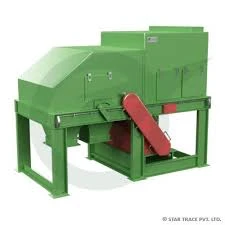

નવેમ્બર . 06, 2024 21:03 Back to list
How Do You Dispose of E-Waste?
In today's digital age, electronic devices play a crucial role in our daily lives. From mobile phones and laptops to household appliances, technology surrounds us and continues to evolve rapidly. However, the increasing usage of electronic devices has led to a growing problem known as electronic waste, or e-waste. E-waste is any discarded electrical or electronic device, and proper disposal of these items is essential for environmental protection and public health. In this article, we will explore effective methods for e-waste disposal, the importance of recycling, and the potential consequences of improper disposal.
Understanding E-Waste
E-waste encompasses a wide range of items, including computers, televisions, smartphones, and even refrigerators. These devices contain various materials, including metals, plastics, and hazardous chemicals like lead, mercury, and cadmium. When disposed of incorrectly, e-waste can release harmful substances into the environment, contaminating soil and groundwater and posing health risks to communities. Therefore, it is crucial to adopt responsible disposal practices for electronic devices.
Why Recycling E-Waste is Important
Recycling e-waste not only prevents environmental pollution but also conserves natural resources. Many of the materials found in electronic devices, such as metals like gold, silver, and copper, can be recovered and reused in new products. This reduces the need for mining and extraction, which can be detrimental to ecosystems. Furthermore, responsible recycling helps in limiting the amount of waste that ends up in landfills, where it can take hundreds of years to decompose.
Methods for E-Waste Disposal

1. Manufacturer Take-Back Programs Many electronics manufacturers offer take-back programs to help consumers dispose of their old devices responsibly. Check with the manufacturer of your device to see if they provide a recycling program. These programs often ensure that devices are responsibly recycled and that harmful materials are safely handled.
2. Local E-Waste Recycling Centers Communities often have designated e-waste recycling facilities that accept discarded electronics. These centers specialize in processing e-waste and ensuring that it is recycled or disposed of in an environmentally friendly manner. Look for local recycling events or designated drop-off locations through your city’s waste management department.
3. Charitable Donations If your electronic device is still functional, consider donating it to local charities or non-profit organizations. Many groups accept working devices to provide technology access to those in need. Be sure to clear all personal data before donating to protect your privacy.
4. Retailer Drop-Off Programs Many retailers, such as big-box stores and electronics outlets, have partnered with recycling programs that allow customers to drop off their old electronics. These programs often offer convenient disposal solutions while ensuring that items are recycled properly.
5. Responsible DIY Disposal If you prefer to disassemble your electronics yourself, ensure that you know how to safely dismantle and separate the materials. Some components may be recyclable, while others require special handling due to hazardous substances. However, this method requires knowledge of electronics safety to avoid injury and environmental contamination.
Conclusion
Proper disposal of e-waste is crucial for environmental sustainability and health safety. By utilizing manufacturer take-back programs, local recycling centers, charitable donations, retailer programs, and responsible DIY methods, individuals can contribute to a cleaner planet. As consumers, it is our responsibility to educate ourselves about e-waste management and to make conscious choices regarding our electronic devices. The next time you upgrade your technology, remember to dispose of your old devices responsibly. Together, we can reduce the impact of e-waste and protect our environment for future generations.
Latest news
Troubleshooting Common Eddy Separator Problems
NewsJul.04,2025
The Role of Metal Recycling Plants in Circular Economy
NewsJul.04,2025
The Impact of Recycling Line Pickers on Waste Management Costs
NewsJul.04,2025
Safety Features Every Metal Shredder Should Have
NewsJul.04,2025
How Industrial Shredders Improve Waste Management Systems
NewsJul.04,2025
How Cable Granulators Contribute to Sustainable Recycling
NewsJul.04,2025